
Soutpan
Soutpan is a tiny settlement, so small that we missed it, geo-position: 28.7178°S, 26.0655°E and 1256m. I am regretting this now, because the Internet tells me that there is a big NG church, see the picture I have borrowed from Wikipedia, I fixed it a bit.
NG church
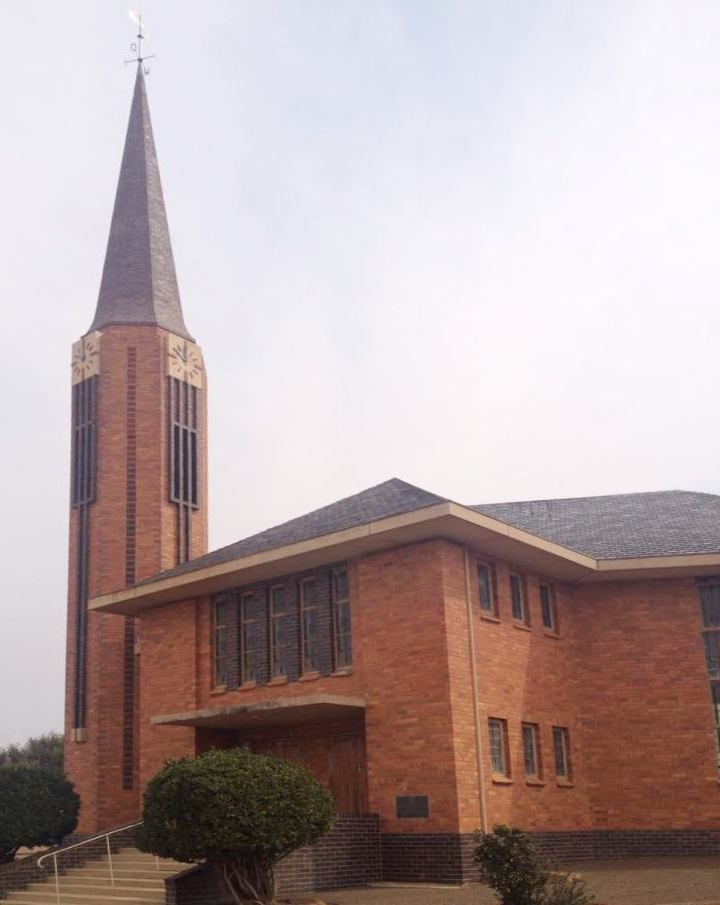 The Soutpan NG congregation came about in 1927 by ceding from the congregation of Dealesville. It was a small community of about 300 struggling with finances over the initial years. But still found enough strength to collect the sum of £12000 for the church building fund in 1951. For the congregation,that worked out to £40 per member or £95 per family, not a small amount considering that the a common monthly salary in those days was around £50. When the church was actually built is unknown to me, it would have been soon after 1951. The builder and designer was F.P.van Heerden, a well known builder of churches at the time.
The Soutpan NG congregation came about in 1927 by ceding from the congregation of Dealesville. It was a small community of about 300 struggling with finances over the initial years. But still found enough strength to collect the sum of £12000 for the church building fund in 1951. For the congregation,that worked out to £40 per member or £95 per family, not a small amount considering that the a common monthly salary in those days was around £50. When the church was actually built is unknown to me, it would have been soon after 1951. The builder and designer was F.P.van Heerden, a well known builder of churches at the time.
Salt mining
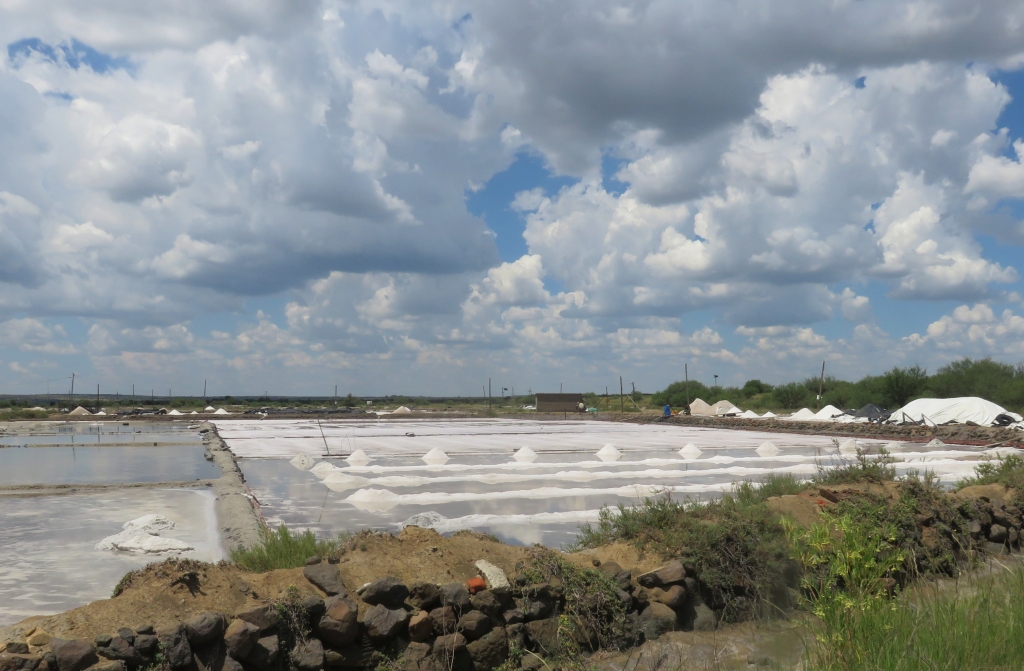 Soutpan translated to english is Salt Pan, and this seems to be one of the activities around here. Out on the pan we noticed a number of white heaps of salt, sodium chloride. When we saw one of those salt places next to the road we had to stop and see. They are pumping the brine from the underground into crystalliser ponds where most of the water is allowed to evaporate and the, salt is then harvested. It takes me back to my work days, the process is called fractional crystallisation. We were told one of their major production constraints is rain.
Soutpan translated to english is Salt Pan, and this seems to be one of the activities around here. Out on the pan we noticed a number of white heaps of salt, sodium chloride. When we saw one of those salt places next to the road we had to stop and see. They are pumping the brine from the underground into crystalliser ponds where most of the water is allowed to evaporate and the, salt is then harvested. It takes me back to my work days, the process is called fractional crystallisation. We were told one of their major production constraints is rain.
About salt mining in the area in general I found this on the Internet, extracting a few snippets from it. Salt mining on the pan goes back to 1880. They used to use wind pumps to draw up the brine. Production now in 2024 is small compared to previous times. It was mainly the heavy rain in 1988 that caused the decline, the pan was under water for three years, producing salt was not possible. In addition to that, since 1997 they have to apply for mining rights and pay royaltis on the brine they pump.
Florisbad
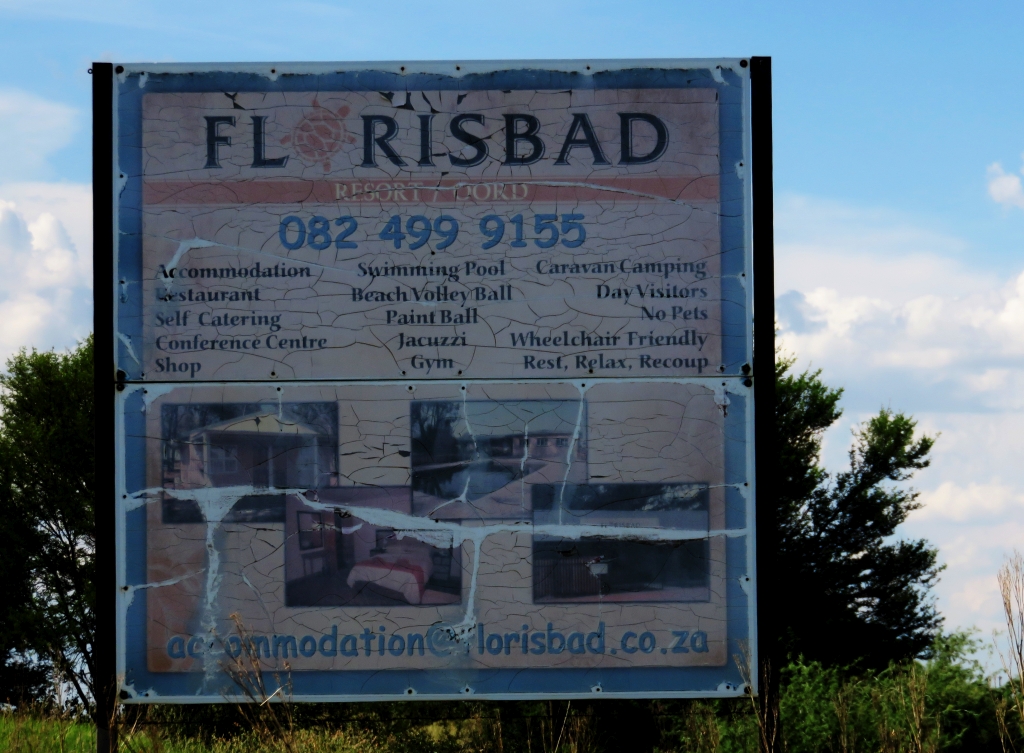 That is the sign one sees coming from Bloemfontein, it advertises the resort and spa that used to be here. It closed down and changed ownership. The accommodation part of the resort is now a drug rehabilitation centre and the remaining a research station belonging to the National Museum. But the resort is still advertised on the internet, I thus presume the change was relatively recent. The geo-position: 28.7672°S, 26.0684°E and 1267m
That is the sign one sees coming from Bloemfontein, it advertises the resort and spa that used to be here. It closed down and changed ownership. The accommodation part of the resort is now a drug rehabilitation centre and the remaining a research station belonging to the National Museum. But the resort is still advertised on the internet, I thus presume the change was relatively recent. The geo-position: 28.7672°S, 26.0684°E and 1267m
I have subdivided the various aspects of the place under the different headings.
History
I make it easy for me and quote verbatum from Ref 4.
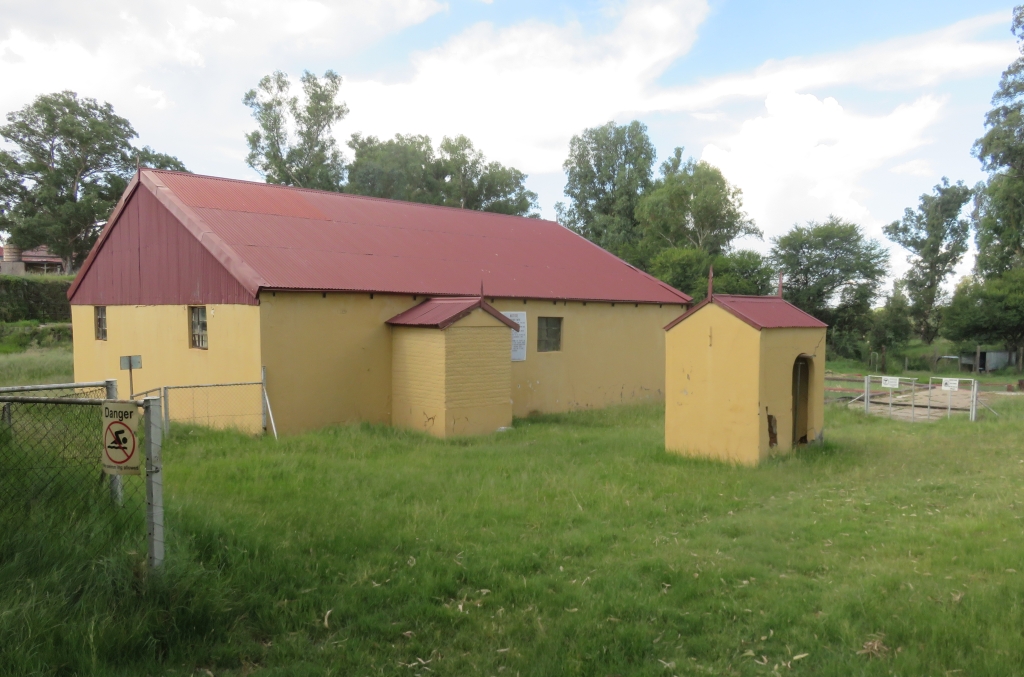 Florisbad was originally settled in 1835 when Hendrick Venter set up his camp next to the mineral spring on the farm. Word of the mineral spring soon spread, and despite it only being a mud hole at the time, it became well known for its 'healing waters'. After Hendrik Venter's death, his son Floris Venter, became the owner of the farm and built a bath house over the eye. The spring then became known as "Floris se bad". Owing to its popularity, the baths were expanded in 1912, and it was at this time that the first few fossil remains were discovered.
Florisbad was originally settled in 1835 when Hendrick Venter set up his camp next to the mineral spring on the farm. Word of the mineral spring soon spread, and despite it only being a mud hole at the time, it became well known for its 'healing waters'. After Hendrik Venter's death, his son Floris Venter, became the owner of the farm and built a bath house over the eye. The spring then became known as "Floris se bad". Owing to its popularity, the baths were expanded in 1912, and it was at this time that the first few fossil remains were discovered.
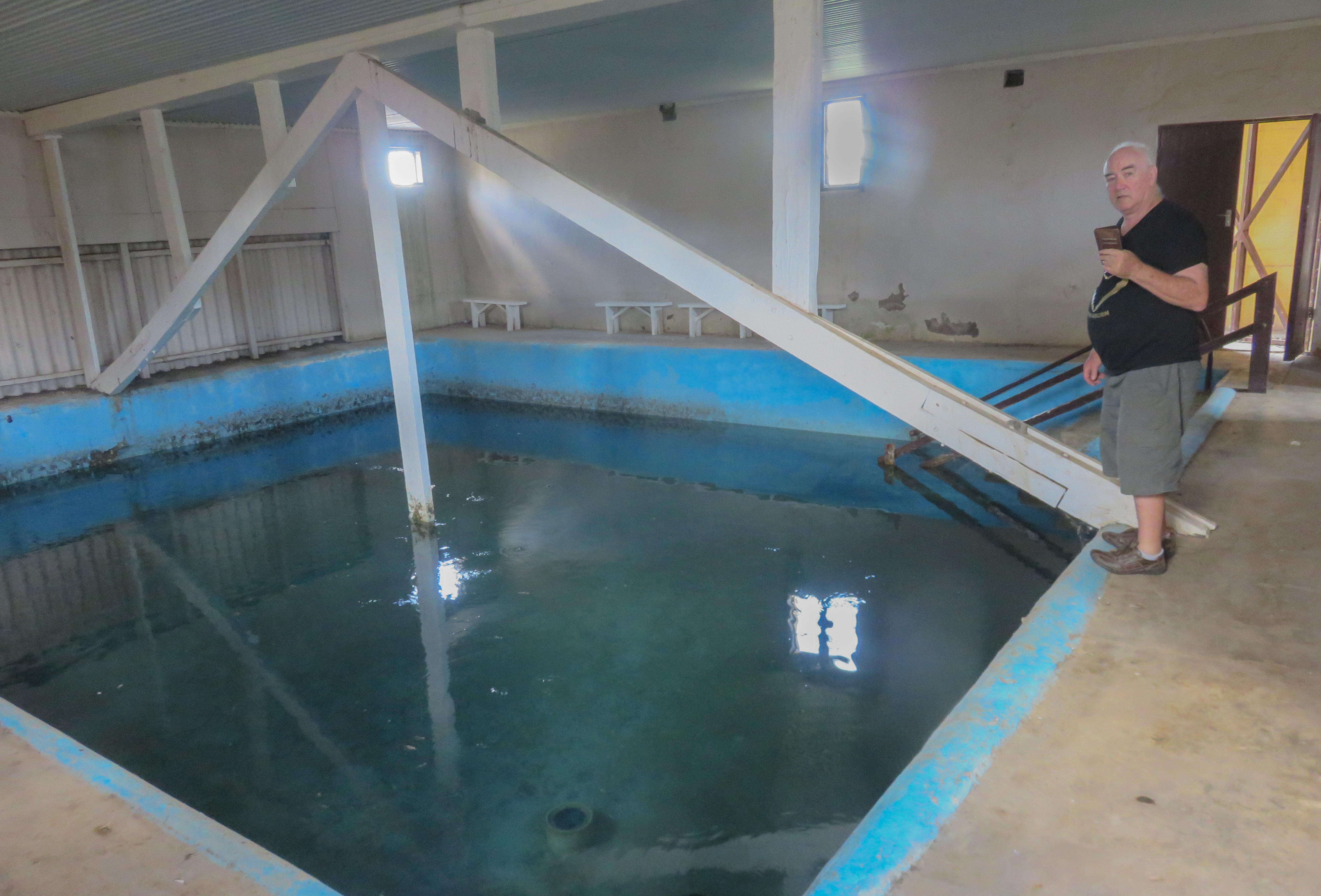 On 9 December 1912, an earthquake at Fauressmith, in the south-western Orange Free State, caused peculiar underground rumblings at Florisbad. These rumblings resulted in a movement of the sands which produced a new eye some 20 meters west of the original eye. With the eruption of the new eye many fossils and artefacts were blown from the hole. Worid wide fame came to Florisbad in February 1932, when Prof. T.F. Dreyer and Willeboer Venter discovered the Florisbad skull in the Middle Stone Age Assemblage (MSA). Florisbad remained in private hands as a pleasure resort until April 1980, when it was purchased by the State and placed in the care of the National Museum, Bloemfontein.
On 9 December 1912, an earthquake at Fauressmith, in the south-western Orange Free State, caused peculiar underground rumblings at Florisbad. These rumblings resulted in a movement of the sands which produced a new eye some 20 meters west of the original eye. With the eruption of the new eye many fossils and artefacts were blown from the hole. Worid wide fame came to Florisbad in February 1932, when Prof. T.F. Dreyer and Willeboer Venter discovered the Florisbad skull in the Middle Stone Age Assemblage (MSA). Florisbad remained in private hands as a pleasure resort until April 1980, when it was purchased by the State and placed in the care of the National Museum, Bloemfontein.
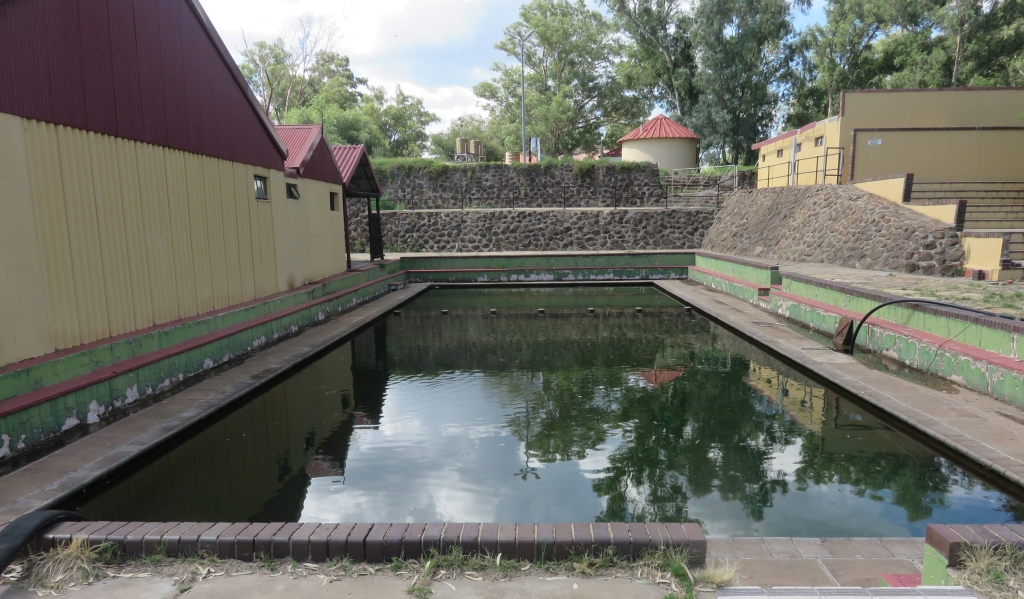
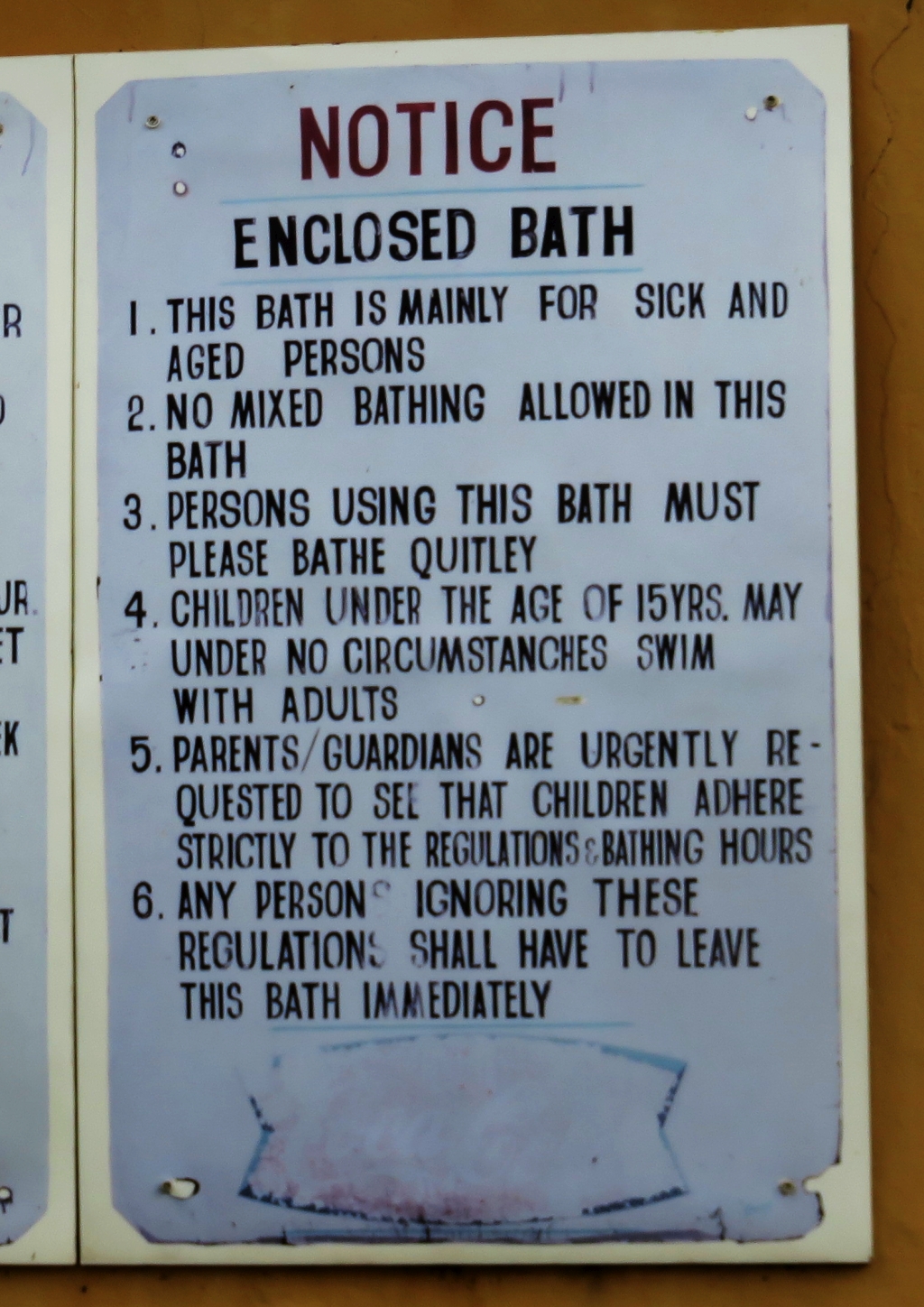 Research at Florisbad has been diverse, and has included research on the Florisbad skull, a great variety of mammal fossils, artefacts , the palaeoenvironment, and pollen analysis. The geology of Florisbad has also been researched with aspects such as the lacustrine deposites,
ithostratigraphy, and sedimentary deposit being examined. Research on more contemporary aspects include entomological studies, herpetological studies, and analysis of the spring water. An extensive collection of the fossils, as well as contermporary animal bones is curated at Florisbad.
Research at Florisbad has been diverse, and has included research on the Florisbad skull, a great variety of mammal fossils, artefacts , the palaeoenvironment, and pollen analysis. The geology of Florisbad has also been researched with aspects such as the lacustrine deposites,
ithostratigraphy, and sedimentary deposit being examined. Research on more contemporary aspects include entomological studies, herpetological studies, and analysis of the spring water. An extensive collection of the fossils, as well as contermporary animal bones is curated at Florisbad.
I am not sure what happened after 1980, it looks like the resort carried on and was further developed until fairly recently. I found a note on the internet, dated 15-June-2021, advertising an auction of the place, asking price R5million. What exists now, that is Feb 2024, is the former resort which is now a drug rehabilitation centre, and the research station.
I am a bit amused by the notice, what would they have meant by 'mixed bathing'?
The spring
What is in the water that could provide these health affects? Ref 3 contains a nice table of concentrations of various components over a time period from 1915 to 1999.
There is information on the properties and composition of the water from the fountain. The major constituents are Na+ 740-800ppm (parts per million), Cl- 1300-1500ppm, F- 6ppm, Ca 87-100, Mg 0.4-7, K .05-8 and Fe between ND (not detected) and 2ppm. There is a long list of other components, all less than 1ppm. The pH of the water is alkaline, 8.9 to 9.3 and the temperature hasn't changed over the period and is 28-28°C.
From that list I can't figure out which component(s) could be responsible for the healing properties. And certainly it was not the temperature.
The archaeological site
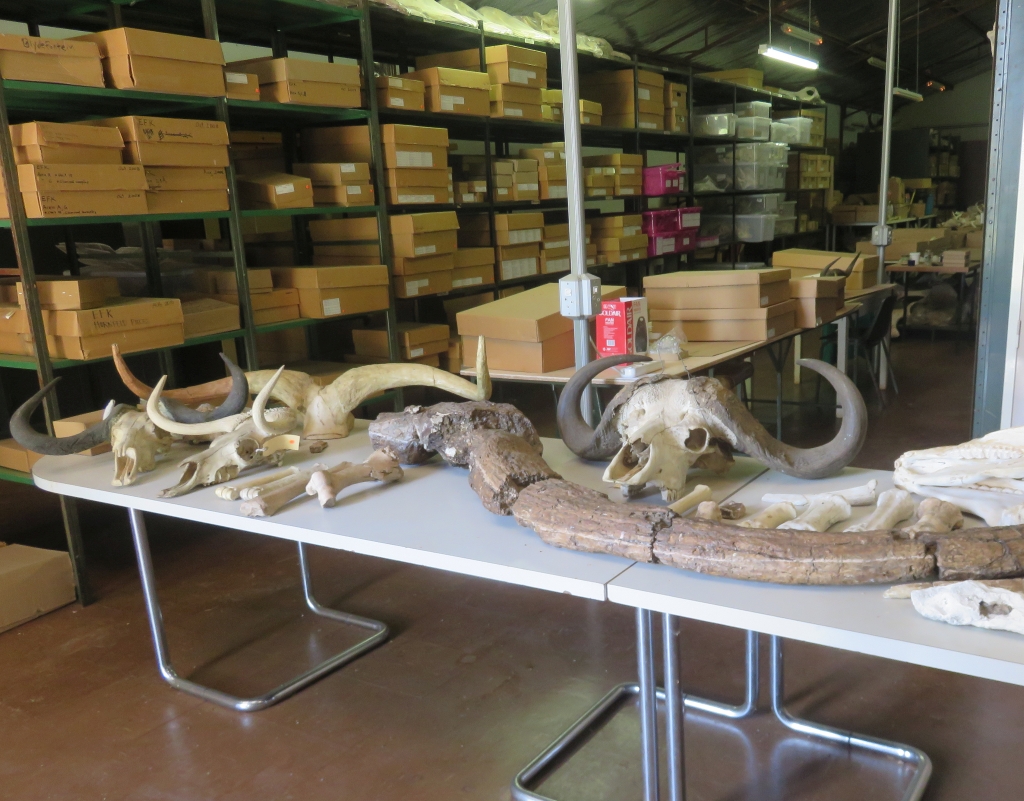 Florisbad was a fossil-bearing spring mound, I use the term 'was' because most of the mound has been dug up in the search for fossils. Digging has been halted, I think, because the store is full of fossils, not prepared and not classified yet. There is still years of work here.
Florisbad was a fossil-bearing spring mound, I use the term 'was' because most of the mound has been dug up in the search for fossils. Digging has been halted, I think, because the store is full of fossils, not prepared and not classified yet. There is still years of work here.
The most well known fossil is a partial skull of 'Florisbad man', classified as Homo sapiens, which has been dated as 260000 years old. Associated with Florisbad man are numerous stone age tools that have been found in the mound. From the display in the store: The fossil skull belongs to an archaic (old) form of Homo sapiens. It differs somewhat from modern people. (Homo sapiens sapiens). The skull appears to have been chewed by a hyaena and it was found among a collection of fossils animal bones in the old springs. These bones are the remains of predators' meal. The 'Florisbad man' was an intermediate type between modern people and earlier types of people - hence its importance in the study of human origin. Note: the skull fragment is much older than the Middle Stone Age horizon being excavated. It must have come from below the horizon and been displaced by the action of the spring waters.
The place where the skull was found in 1932 by Professor TF Dreyer and Willeboer Venter has been marked by a memorial stone.
The fossil skull belongs to an archaic (old) form of Homo sapiens. It differs somewhat from modern people. (Homo sapiens sapiens). The skull appears to have been chewed by a hyaena and it was found among a collection of fossils animal bones in the old springs. These bones are the remains of predators' meal. The 'Florisbad man' was an intermediate type between modern people and earlier types of people - hence its importance in the study of human origin. Note: the skull fragment is much older than the Middle Stone Age horizon being excavated. It must have come from below the horizon and been displaced by the action of the spring waters.
The place where the skull was found in 1932 by Professor TF Dreyer and Willeboer Venter has been marked by a memorial stone.
But the bulk of the fossilised bones are mammalian remains from the Florisbad spring, dated to between 400 000 and 100 000 years ago.
References
Ref 1.: Standard Encyclopedia of Southern Africa, Nasou Limited, 1974
Ref 2.: Wikipedia
Ref 3.: RM Douglas, 'The quality of the Florisbad spring-water in relation to the quality of the groundwater and the effects of rainfall', Water SA Vol. 27 No. 1 January 2001
Ref 4.: SAMA Central Newsletter, Vol 1, NO 2, December 1993